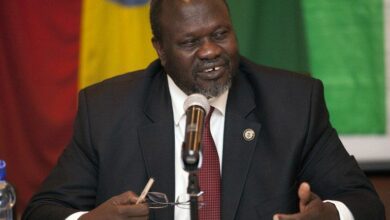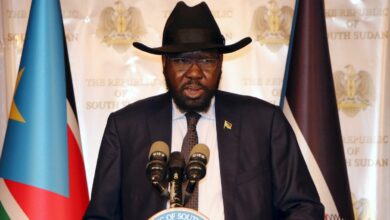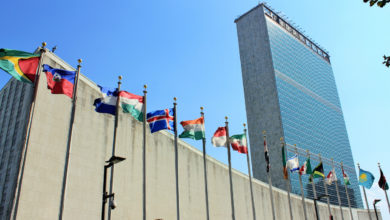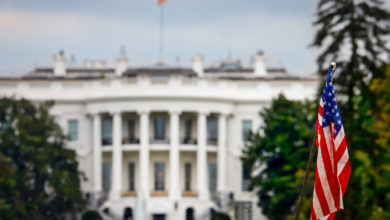South Sudan
South Sudan, in the long republic of South Sudan is a country in East Africa whose capital is Juba. Following the self-determination referendum held from January 9 to 15, 2011, South Sudan seceded from the Republic of Sudan on July 9, 2011; but despite the immediate recognition of the state by the international community, disputes remain over the final course of the border. In 2013, the Republic of South Sudan sank into a particularly bloody civil war between supporters of President Salva Kiir and those of Vice President Riek Machar.
South Sudan’s history
Conflicts for autonomy
The dissensions between the north of Sudan, mainly Muslim, and the south mainly Christian and animist, appeared in the aftermath of the independence of the Anglo-Egyptian Sudan proclaimed in 1956. Indeed, the central government of Khartoum reversed the promises autonomy within a federal state that he had made to the populations of the region. A mutiny by southern officers sparked the first 17-year Sudanese civil war from 1955 to 1972. This first conflict ended after the agreements signed in Addis Ababa, Ethiopia, which finally granted South Sudan a certain degree of autonomy. But in 1983, Colonel Gaafar Nimeiry in power in Khartoum since his coup in 1969, unilaterally decided to extend to criminal law, the field of Muslim law which had been confined since colonization to personal law. It was the trigger for the second civil war that engulfed the country for twenty-two years. The rebellion was led from the start by the Sudan People’s Liberation Army (SPLA) led by John Garang, a veteran of the First Civil War. It was widely supported by the United States. Despite the split of his movement in 1991, Garang continued the fight against the Khartoum regime which, after the coup d’etat of General Omar al-Bashir in 1989, turned more and more towards Islamist ideology. After a bloody conflict (two million dead identified) which also displaced four million civilians and disrupted food production to the point of triggering a terrible famine in 1998, a cease-fire was signed between the protagonists in 2002, consolidated three years later, on January 9, 2005, by a peace agreement signed in Naivasha, Kenya.
On the way to independence
The peace agreement signed in Naivasha (Kenya) on January 9, 2005, gives South Sudan broad autonomy for six years, after which the inhabitants of the region must be invited to a referendum on self-determination. John Garang becomes Vice President of the Republic of Sudan but dies six months later in a helicopter accident. He is replaced in all of his functions by Salva Kiir. The independence of the South, desired by the majority of the population of this region, is supported in particular by the United States. The work of the United States Agency for International Development (USAID) has included the creation of a central bank in Rumbek, the region’s main city, which is being reorganized with the status of a nation state. This independence referendum was held from January 9, 2011 to January 15, 2011. Nearly three million people registered on the electoral lists for this event. In anticipation of this, more than 50,000 South Sudanese who have settled so far in the North have definitively returned to their villages of origin. Faced with the votes that overwhelmingly approve the “secessionist” option, the Sudanese President Bechir has announced several times that he will bow to the verdict at the polls. At the close of the poll, the participation rate was evaluated at more than 80% of the registered voters, while a rate of 60% had been previously fixed to validate the results of the vote. The final results validated by the Referendum Commission responsible for organizing the poll give the winning “yes” by 98.83% among the 3,837,406 valid votes, of which only 44,888, or 1.17%, were in favor of maintaining the unity with the North. Between the publication of the referendum results and the date of independence, the authorities of Sudan and South Sudan must agree on sensitive issues such as the delimitation of borders, the status of the disputed Abyei region, the status of the populations of each future state living on the territory of the other.
Independence and global recognition
A state under construction
The African Union is trying to find a solution and is putting pressure on the belligerents. A new attempt at reconciliation was attempted in April 2016. Riek Machar returned to settle in the capital, Juba, accompanied by a contingent of armed men. But in July, this attempt at reconciliation came to an abrupt end, degenerating into fighting between government troops and those of Riek Machar, in the heart of the capital. Riek Machar himself saves his skin, by little, by fleeing and taking refuge in the Democratic Republic of Congo, then in Sudan. On July 7, 2018, another attempt began to try to put an end to the civil war, with a permanent cease-fire agreement between the belligerents, and modalities for gradually restoring a national union. On August 5, 2018, an agreement signed in Khartoum provides for the appointment for three years of Riek Machar as vice-president, and of four other vice-presidents, the formation of a transitional government of 35 members, including 20 from Kiir, 9 Machar, as well as the enlargement of the parliament to 550 members, including 332 loyal to Kiir and 128 to Machar. On September 12, 2018, the peace agreement was signed in Addis Ababa. The implementation of these agreements then proceeds step by step. On February 22, 2020, after two successive postponements, Riek Machar is officially enthroned vice-president, in the presence of Salva Kiir, with four other vice-presidents, including Rebecca Garang, widow of John Garang, historical leader of the struggle of South Sudanese for independence, died in 2005.
South Sudan’s politics
Pending elections, seats in the Legislative Assembly and the government of South Sudan are to be distributed in the following proportions between the Sudan People’s Liberation Movement (70%), the National Congress (the former National Islamic Front ( in)) (15%), and “other political forces in the South” (15%). Before his death on July 30, 2005, rebel leader John Garang was the president of South Sudan. Garang was replaced by Salva Kiir who was also sworn in as Vice-President of the Republic of Sudan on August 11, 2005. He was replaced as Vice-President of South Sudan by Riek Machar. On July 7, 2011, the South Sudanese Parliament ratified an interim constitution which, according to the Carter Research Center (an observatory set up by former US President Jimmy Carter), contains a number of provisions that concentrate power between hands of the government. President Kiir’s formal ratification of this constitution was made on July 9, the day of the country’s proclamation of independence.
South Sudan’s economy
The presence of the White Nile and its numerous tributaries, as well as the tropical climate, allow an abundant agriculture producing cotton, peanuts, sorghum, millet, wheat, corn, gum arabic, sugar cane , cassava (tapioca), mangoes, papayas, bananas, sweet potatoes and sesame. The White Nile and its tributaries also allow the production of hydroelectricity. The subsoil of South Sudan is also very rich: it contains petroleum, iron ore, copper, chromium, zinc, tungsten, mica, silver and gold. Gold would be since 2014 the new windfall (hoped).
Oil industry
Before independence, South Sudan supplied about 85% of the production of the 470,000 barrels of oil per day for the whole of Sudan. However, the equipment and the petroleum industry are found mainly in the North. Pipelines from the south lead north to Port Sudan on the shores of the Red Sea. The main refinery is located 70 kilometers north of the Sudanese capital, Khartoum. In order to strengthen its independence from Sudan, South Sudan is considering a pipeline project linking it to Kenya, in particular to the Lamu refinery 240 kilometers north of the port of Mombassa.
Currency
As of July 18, 2011, South Sudan puts into circulation its own currency, the South Sudanese pound, thus replacing the Sudanese pound. The exchange parity was 1 to 1 at the time. The price then unscrewed at the start of 2016.
South Sudan’s demography
In 2016, the population of South Sudan is estimated at around 12.5 million. The region was hit hard by the two civil wars continued for forty years, with the exception of ten years of calm between 1972 and 1983. The result was a lack of infrastructure development, destruction and displacement of populations: more than two million dead, and more than four million displaced or refugees due to these events and its consequences. The population is mainly rural; life is linked to a subsistence economy.
The Dinkas are the largest of many communities in South Sudan. Along with the Nuer and the Shilluks, they are among the Nilotic peoples. The Zandés and Jur Chols are communities located in the west, and the Acholis and the Lotukos live in the extreme south, and as far as Uganda. All the agitation between the two peoples has the simple aim of protecting its own ethnic group. The Dinka (ethnic group of the president) against the Nuer (ethnic group of Rier Machar). Each ethnic group protects its politician. The Upper Nile and Unity states in the north of the country are nothing more than a battlefield. Nearly 500,000 South Sudanese have crossed borders with a neighboring state, and the immense proportion of people wandering across the country is unknown.
South Sudan’s education
In South Sudan, the education system is modeled on that of Sudan. Primary education extends over 8 years, followed by three years of secondary education and then 4 years of university studies; it is an 8 + 3 + 4 system, in force since 1990. The language used in these three levels of education is English, unlike Sudan, where the language of instruction is Arabic. In the scientific and technical fields, a large number of English-speaking teachers is missing.
South Sudan’s language
According to article 6 of the 2011 constitution, English, the former colonial language, is in theory the only official language in the country. However, it is only spoken by 3 to 5% of the population, especially in urban areas (these figures include so-called “partial” speakers). English is especially present among refugees from South Sudan who have lived in the neighboring English-speaking countries, and who return to the country with independence. In reality, it is Juba Arabic, a lingua franca derived from Sudanese Arabic, which is the most widely used and lingua franca of South Sudan. There are also many vernacular languages, recognized as “national languages” by the same article of the constitution. These are mainly Nilo-Saharan or Nilotic languages belonging to the Chari-Nil group (at least two million speakers), the most important of which is Nuer-Dinka (comprising several dialect varieties) which has more than 1.3 million of speakers. However, as a general rule, Nilotic languages such as Bari, Toposa and Moro-Madi languages have few speakers, less than five thousand, often less than a thousand. Zandé, a Niger-Congolese language, is spoken in the southwest.
-
South Sudan

South Sudan: Vice President Riek Machar, Wife Angelina Teny Test Positive For Coronavirus
South Sudan Vice President Riek Machar and his wife Minister of Defense Angelina Teny have contracted coronavirus, his office confirmed…
Read More » -
South Sudan

South Sudan: President Salva Kiir Pledges Military Involvement To Boost Food Security
South Sudanese President Salva Kiir on Friday said the government would deploy military during peacetime to help in efforts to…
Read More » -
South Sudan

UN Human Rights Chief Calls Out South Sudan To Address Growing Inter-Communal Clashes
The United Nations High Commissioner for Human Rights on Friday called out South Sudan authorities to address growing intercommunal violence…
Read More » -
South Sudan

South Sudan’s President Salva Kiir Calls For Rooting Out Corruption From The Country
South Sudan’s President Salva Kiir on Wednesday warned ministers in the first-ever cabinet meeting of the Transitional Government of National…
Read More » -
South Sudan

South Sudan: President Kiir Announces New Cabinet In Transitional Unity Government
South Sudan’s President Salva Kiir on Thursday appointed key ministers to the latest power-sharing government formed last month in line…
Read More » -
East Africa

South Sudan: Riek Machar Ready To Talk Peace With Kiir If His Demands Are Met
South Sudan’s former vice president and exiled leader Riek Machar says he is ready to talk peace with his rival…
Read More » -
Burkina Faso

The U.S. Considering Plan To Put New Travel Restrictions On African Countries
A new report suggests the United States government is planning to put stricter travel restrictions for countries whose nationals frequently…
Read More »

